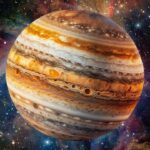
📷 Image Credits: Moneycontrol
NASA’s recent estimate of a trillion Earth-like planets capable of hosting life has ignited their ambitious quest to explore the universe. With missions to the moon and Mars, along with groundbreaking research in synthetic DNA, NASA is closer than ever to uncovering the secrets of extraterrestrial life.
NASA scientists have made an astonishing revelation: there could be at least a trillion planets like Earth that might support life. This mind-blowing estimate is fueling NASA’s relentless quest to explore the universe and discover if we are truly alone. In the near future, NASA plans to send astronauts back to the lunar surface. Next year, a mission will see four astronauts orbiting the moon, marking a significant step towards deeper space exploration. We’re not just returning to the moon for the sake of it. We’re going back to gain new knowledge, paving the way for future missions to Mars and beyond, stated NASA administrator Bill Nelson.
Central to NASA’s efforts is the Perseverance Rover, currently exploring the Jezero Crater on Mars, which was once a lakebed. Scientists are hopeful that this area may have harbored life in the distant past. It’s collecting samples and using a drill to create core samples, which are then sealed in titanium tubes, Nelson explained. We are currently figuring out how to retrieve these samples and bring them back to Earth to determine if life ever existed there. Collaborating with various companies, NASA is devising a strategy for this return mission, projected for the 2030s.
Among these collaborators is Firebird Diagnostics, aiding in the search for Martian life. One of NASA’s goals is to determine whether we are alone in the universe, said Firebird Diagnostics Founder Steven Benner. Benner’s company specializes in synthetic alien DNA, which has helped NASA explore potential forms of alternative DNA. This research is crucial in understanding how molecular biology might function in life forms that do not share a common ancestry with humans. It’s a significant question how molecular biology might function if it were carried out by an organism that doesn’t share a common ancestor with humans, Benner said.
The synthetic DNA developed by Benner’s company also has applications in detecting diseases like COVID-19, cancer, and HIV. While human DNA consists of four nucleotides, Benner’s synthetic version includes up to eight, allowing for more sensitive testing and reducing false positives. This technology helps pinpoint rare sequences without interference from background noise, Benner noted. Nelson emphasized that the quest to find extraterrestrial life also helps us better understand our place in the universe. If you ask me if there are aliens on Earth, I don’t think so, though I can’t be certain, Nelson said. I don’t believe the U.S. government is concealing anything. But if you ask if there’s life elsewhere in the cosmos, our NASA scientists estimate there are at least a trillion possibilities of planets like Earth that could support life. Although the probability of discovering life in space exists, Nelson acknowledged that such life is likely so distant it won’t be found for a long time. Nevertheless, NASA continues to prepare for this potential discovery. Even traveling at the speed of light, the nearest potentially habitable planets are thousands of light years away, Nelson explained. However, this doesn’t prevent us from gaining some understanding of what might be out there. Nelson has also directed NASA scientists to incorporate artificial intelligence into spacecraft software.







